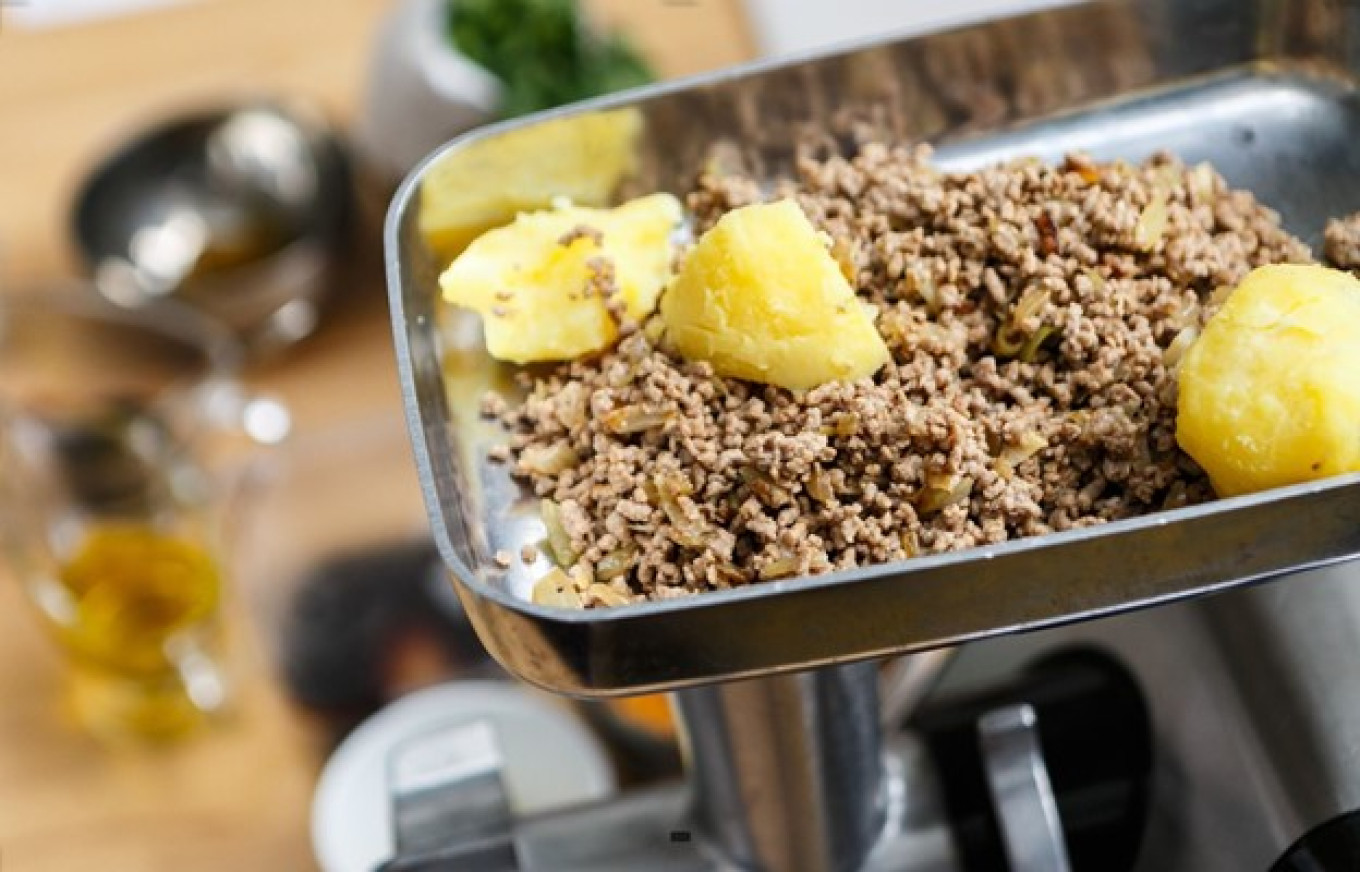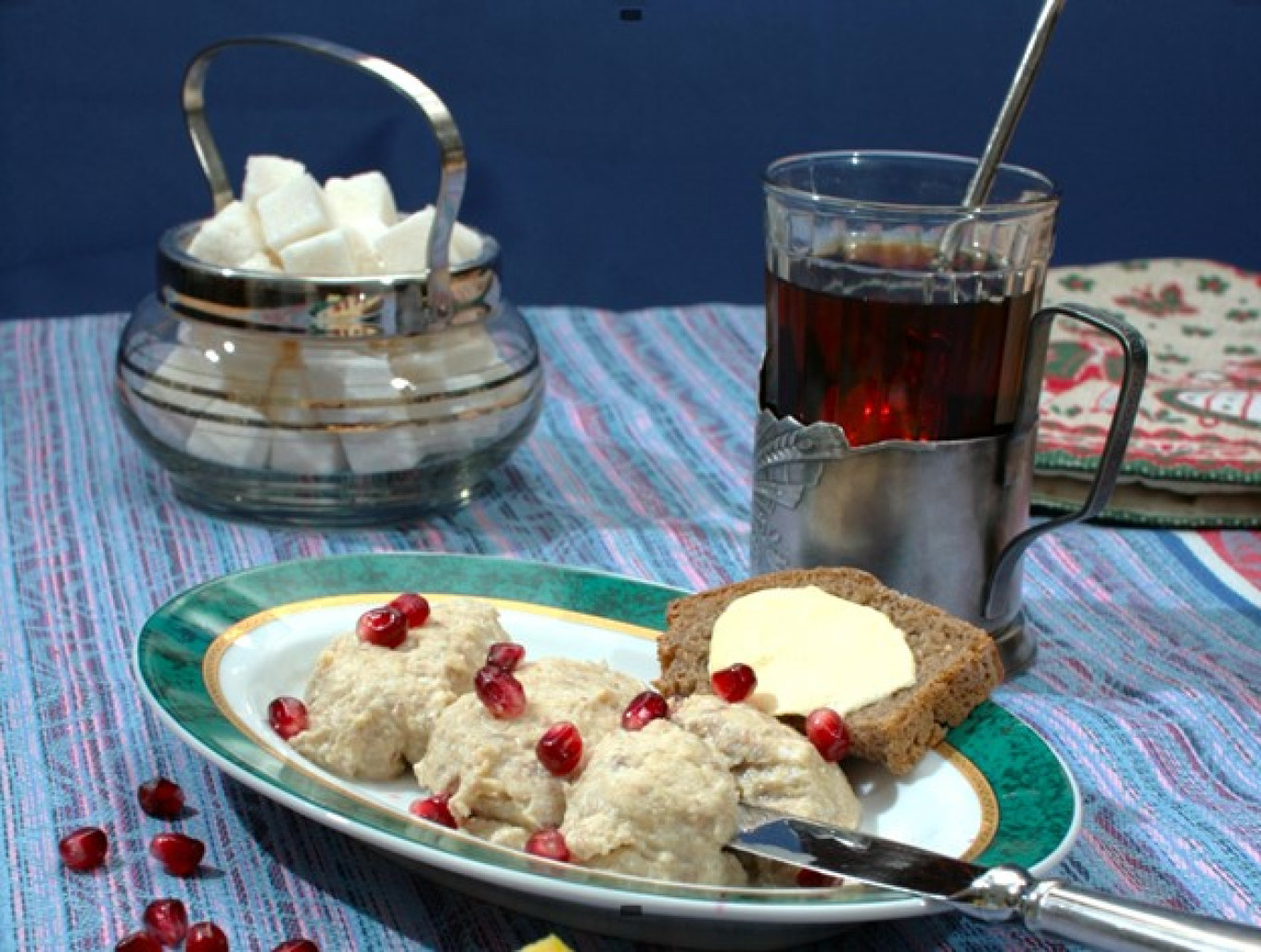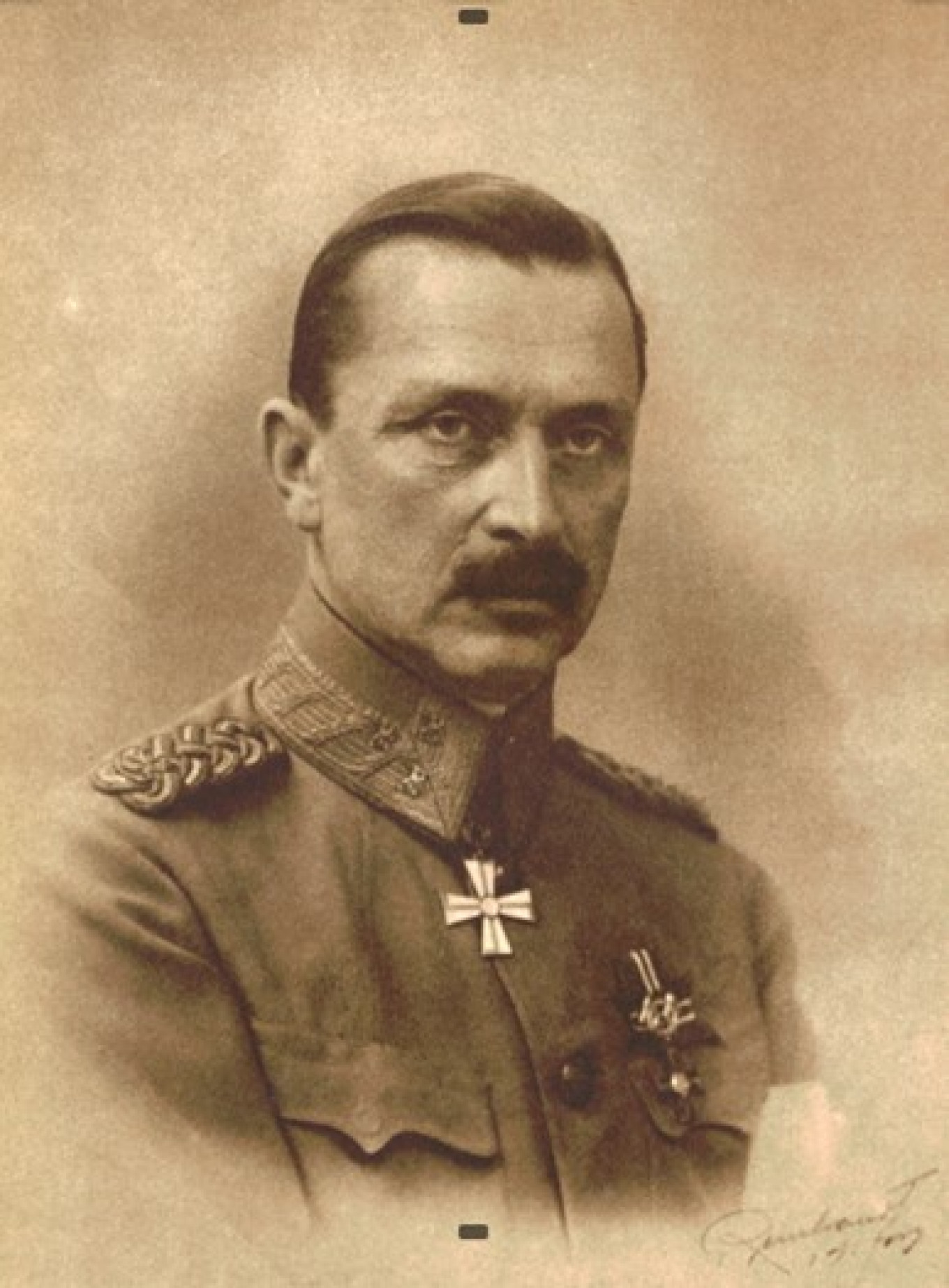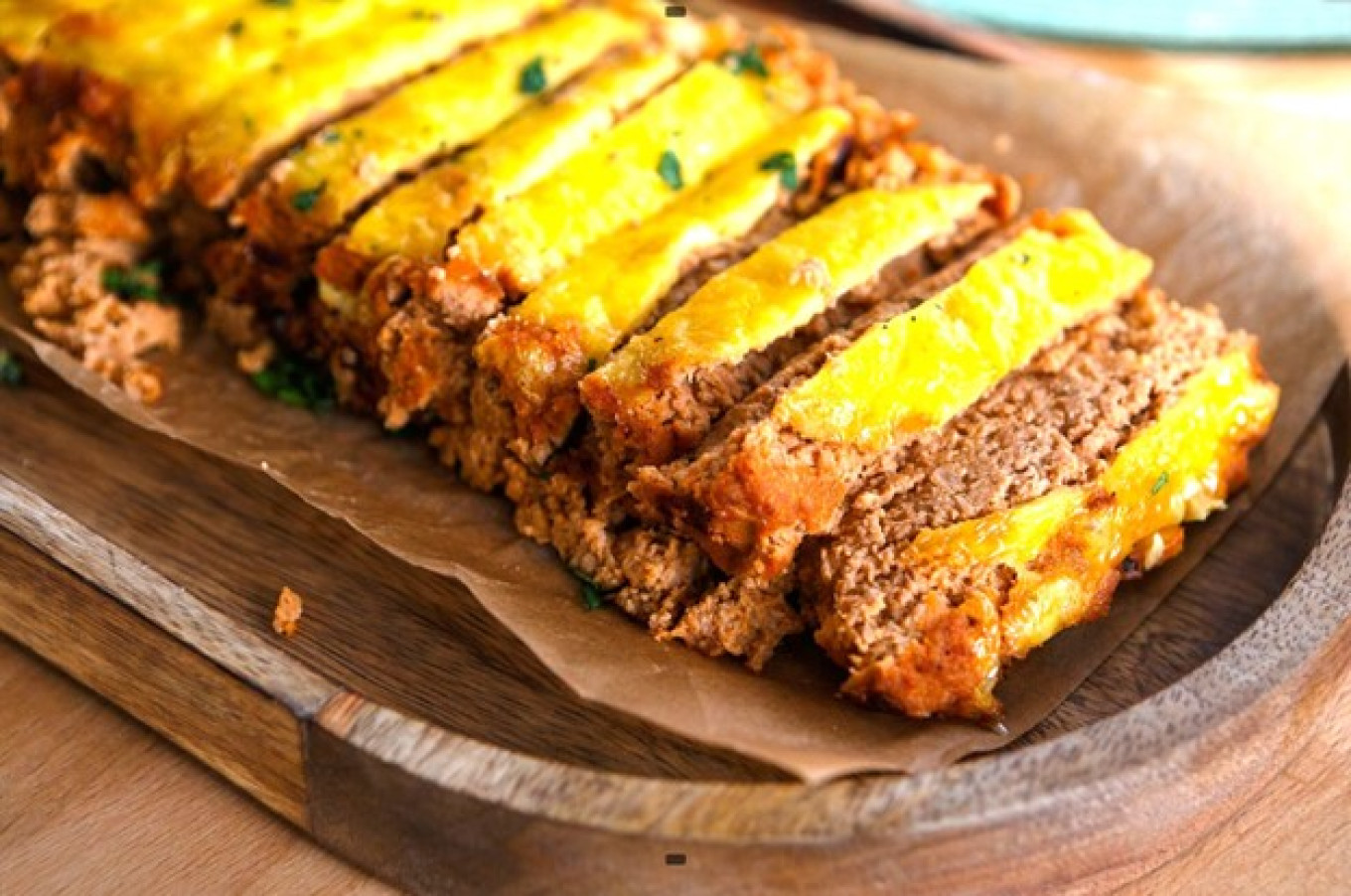Today if you asked Russians, most of them would tell you that forshmak is part of Jewish cuisine. But 150 years ago it was absolutely considered a Russian dish. In the 19th century forshmak was as familiar to the Russian people as sausages are today. Somehow this dish managed to assimilate the traditions of German, Jewish and Russian cuisine.
Everyone probably knows and loves herring forshmak, but veal forshmak with herring will be a new discovery for many.
The name of the dish – forshmak – tells us its meaning: it is an appetizer, “a meal before a meal.” This dish originated in northern Germany and came to Russia as part of a foreign cuisine thanks to Peter the Great.
At that time, forshmak was a hot appetizer served in Prussia, and so it was in Russia, too. It gained popularity at the beginning of the 19th century. For example, it’s what Yekaterina Avdeyeva describes in her recipe for Veal Herring, published in “The Handbook of a Experienced Russian Hostess” (1842):
Put in a pot boned veal and two herrings that have been soaked, skinned and boned; chop them finely all together. Sieve boiled potatoes, add them to the veal along with a teaspoon of breadcrumbs, finely ground, and a chopped onion. Stir everything and mince it all together until it has the consistency of dough. Then pour into this batter a teaspoon of cream, five raw eggs, and two tablespoons of butter. Take a flat tin or deep frying pan, grease it, sprinkle it with breadcrumbs, put the prepared batter into it, put it in the oven, let it brown well. This dish can be served for breakfast or as an appetizer at the beginning of a meal.

Forshmak became part of Jewish cuisine around the same time. Under Catherine the Great, Russia introduced the so-called Pale of Settlement, a boundary of territories in the western provinces where Jews were allowed to reside. These regions were not wealthy, which was reflected in their cooking. And so the Jewish version of forshmak uses the most inexpensive products. What could be cheaper than last year’s pickled herring? That’s where the habit of soaking salted herring overnight in tea came in: old fish had to be firmed up before it could be ground into the forshmak. So in Jewish cuisine, forshmak was transformed into a cold appetizer of ground herring mixed with onion, egg, and apple.
At the beginning of the 20th century, as the economic crisis deepened, the inexpensive version of forshmak gradually spread all over Russia. “In Teriberka on Murman they began to prepare cheap preserves, fillets and forshmak from cod and haddock,” wrote Nikolai Zograf, a Moscow University professor, in 1909 in a book called — typically for the times —”Nutritious Food Affordable to the Poor.” “Forshmak of sprats” was recommended in 1905 by the unnamed author of “The Complete Gift to Young Housewives,” a spoof of the famous volume by Yelena Molokhovets.
And then came the 1917 Revolution. Back at the dawn of Soviet power, Jewish cuisine had a huge impact on Soviet food services. To begin with, shortly before the revolution, the Provisional Government abolished the Pale of Settlement (although de facto it had been dissolved in 1915). Some dishes from Jewish cuisine became popular, and the traditional products used in the “budget version” of forshmak were a perfect fit with the modest post-revolutionary food ration.
But even for some time after the revolution this dish was revered. For example, here’s the recipe from a book by E. G. Uvarova, “A Housewife’s Companion” (1927):
Beef Forshmak. Take a tender piece of boiled or fried meat, about ¾ kg in total, put it through a meat grinder together with some boiled potatoes, cleaned herring and chopped and fried onion. Add a pat of butter, two tablespoons of sour cream, pepper, mix well, put it in a pan greased with butter and sprinkled with breadcrumbs, put it in the oven at medium heat until it browns. If the meat is fatty, you can leave out the butter and replace the sour cream with an equal amount of bouillon or milk to keep the forshmak moist.

One of the founders of the Soviet science of therapeutic nutrition was Manuel Pevzner. He led a remarkable life. He practiced in leading clinics in Germany as early as 1900 and defended his doctoral thesis in Moscow. After the Revolution he became one of the founders of the Institute of Nutrition of the People’s Commissariat of Health of the U.S.S.R. It was his innovation to develop medical diets to alleviate certain diseases. For many decades his 15 “medical tables,” specific diets prescribed depending on the patient’s condition, were a mainstay in hospitals and sanatoriums. In his recommended medicinal broths, finely ground meat patties and sweet pastries — the favorite dishes of anyone who was prescribed a medicinal diet in the Soviet era — you can spot Jewish culinary roots.
Pevzner has one more unrivalled achievement. He was a defendant in the case of the so-called “doctors’ plot” in 1952 after his death (from a heart attack). This was the last sensational Stalinist trial of the “enemies of the people.”
As for Jewish cuisine — its influence on Soviet culinary tradition has always remained outside the scope of official history. But it’s impossible to ignore its contribution to the Russian and Soviet tradition. And at least the “Book of Tasty and Healthy Food” (1939) and other Soviet publications included the Jewish recipe of herring forshmak.

We should say that many ethnic groups claim forshmak for their own: Jews, Germans, and Swedes claim, and Finns consider it their national dish because it was Marshal Mannerheim’s favorite appetizer.
Baron Carl Gustav Emil Mannerheim, lieutenant general of cavalry of the Russian Empire and officer of the General Staff, was a Swede by birth, studied in Russia, and served in Poland. Later he became Marshal and President of Finland.

He was an expert not only in questions of military strategy, but something of a specialist in food and drink. Mannerheim regularly came to the Savoy restaurant in Helsinki and ordered his favorite dish for lunch. The Marshal’s forshmak was made of lamb and beef. The meat was roasted with onions and then shredded together with salted herring and anchovies. Garlic was added, and it was roasted with plenty of water. He loved this dish with potatoes as a side dish.
Even today you can order forshmak at the Savoy, just as in Mannerheim’s time. It’s not clear if there was a Russian element to this story. The Savoy opened 20 years after Finland declared its independence from Russia. Finns, at the recommendation of their heroic Mannerheim, fell in love with this dish and cook it to this day. In Russia, hot meat forshmak slipped out of the culinary tradition.
But it need not have disappeared, especially since it’s quite easy to make.
Veal Forshmak
Ingredients
- 500 g (generous 1 lb) veal (shoulder or thigh)
- ½ herring
- 100 g (3.5 oz or a scant ½ c) sour cream (20% fat content)
- 50 ml (1/4 c) of broth (or add a bit more sour cream instead of broth)
- 1 Tbsp clarified butter
- 1 onion
- 2 potatoes, boiled in their jackets
- 1 Tbsp tomato paste
- 50 g (scant 2 oz. or ¼ c) hard cheese
- salt, pepper to taste
- oil to grease the pans
Instructions
- Dice the onion and sauté until golden. Leave in frying pan.
- Put the meat through a food grinder using the fine plate and then add to the pan with the sautéed onion. Fry all together on medium heat until the minced meat is cooked through — about 10 minutes.
- Preheat oven to 180˚C/350˚
- Peel boiled potatoes. Clean and skin the herring and slice.
- Put the minced meat fried with onion, potatoes and herring through a meat grinder.
- Add sour cream, eggs, tomato paste, salt and pepper to taste.
- Grate the cheese.
- Grease a baking dish and fill with the forshmak. Sprinkle with cheese. (You can also use individual ramkins).
- Bake for 30 minutes.

Leave a Reply